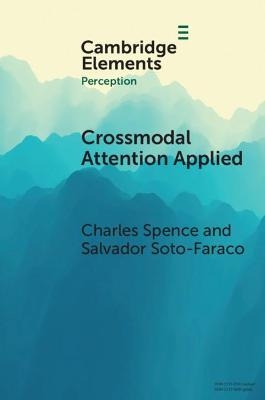
Crossmodal Attention Applied
Lessons for Driving
Seiten
2020
Cambridge University Press (Verlag)
978-1-108-82650-1 (ISBN)
Cambridge University Press (Verlag)
978-1-108-82650-1 (ISBN)
In this Element laboratory studies on crossmodal attention are situated within the applied context of driving. The conditions favoured by laboratory research, typically using a few paradigms involving simplified experimental conditions, is contrasted with multisensory, real-world environments filled with complex, intrinsically-meaningful stimuli.
Cognitive neuroscientists have started to uncover the neural substrates, systems, and mechanisms enabling us to prioritize the processing of certain sensory information over other, currently less-relevant, inputs. However, there is still a large gap between the knowledge generated in the laboratory and its application to real-life problems of attention as when, for example, interface operators are multi-tasking. In this Element, laboratory studies on crossmodal attention (both behavioural/psychophysical and cognitive neuroscience) are situated within the applied context of driving. We contrast the often idiosyncratic conditions favoured by much of the laboratory research, typically using a few popular paradigms involving simplified experimental conditions, with the noisy, multisensory, real-world environments filled with complex, intrinsically-meaningful stimuli. By drawing attention to the differences between basic and applied studies in the context of driving, we highlight a number of important issues and neglected areas of research as far as the study of crossmodal attention is concerned.
Cognitive neuroscientists have started to uncover the neural substrates, systems, and mechanisms enabling us to prioritize the processing of certain sensory information over other, currently less-relevant, inputs. However, there is still a large gap between the knowledge generated in the laboratory and its application to real-life problems of attention as when, for example, interface operators are multi-tasking. In this Element, laboratory studies on crossmodal attention (both behavioural/psychophysical and cognitive neuroscience) are situated within the applied context of driving. We contrast the often idiosyncratic conditions favoured by much of the laboratory research, typically using a few popular paradigms involving simplified experimental conditions, with the noisy, multisensory, real-world environments filled with complex, intrinsically-meaningful stimuli. By drawing attention to the differences between basic and applied studies in the context of driving, we highlight a number of important issues and neglected areas of research as far as the study of crossmodal attention is concerned.
1. Introduction; 2. Exogenous crossmodal attention; 3. Back to the laboratory: endogenous crossmodal attention; 4. Interactions between endogenous and exogenous attention; 5. Olfactory contributions to crossmodal attention while driving; 6. Conclusions.
| Erscheinungsdatum | 10.09.2020 |
|---|---|
| Reihe/Serie | Elements in Perception |
| Zusatzinfo | Worked examples or Exercises |
| Verlagsort | Cambridge |
| Sprache | englisch |
| Maße | 153 x 230 mm |
| Gewicht | 200 g |
| Themenwelt | Geisteswissenschaften ► Psychologie ► Biopsychologie / Neurowissenschaften |
| ISBN-10 | 1-108-82650-4 / 1108826504 |
| ISBN-13 | 978-1-108-82650-1 / 9781108826501 |
| Zustand | Neuware |
| Haben Sie eine Frage zum Produkt? |
Mehr entdecken
aus dem Bereich
aus dem Bereich
Grundlagen, Klinik, Rehabilitation
Buch | Softcover (2024)
Urban & Fischer in Elsevier (Verlag)
CHF 78,40
Buch | Spiralbindung (2022)
modernes lernen (Verlag)
CHF 41,90
Grundlagen, Klinik, Therapie und Verlauf der …
Buch | Softcover (2024)
Kohlhammer (Verlag)
CHF 117,60


